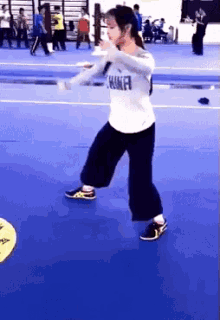
Tai Chi and Qigong are ancient Chinese practices that have gained popularity around the world in recent years. Both are forms of exercise that are said to relieve stress and increase energy. They are often considered to be similar practices, but in reality, they have some notable differences. In this blog, we will explore the differences between Tai Chi and Qigong, and help you determine which practice may be right for you.
Tai Chi & Qigong

Tai Chi is often referred to as ‘moving meditation’. It involves a series of slow, gentle motions that are patterned after natural movements. Most of the work is performed while standing and taking small steps. Tai Chi forms involve a series of moves that can take months and a lifetime to master. It is generally more complex than Qigong and is a martial art that was developed more recently by Shaolin monks and Chinese military leaders. On the other hand,
Qigong can be referred to as the ‘internal’ portion of Tai Chi. It involves more simple movements that are often stationary and repeated a certain number of times. Qigong is often one single move repeated over and over, and sometimes does not involve movement at all, but will focus only on breathing. It is a system of wellness that has roots going back thousands of years and is deeply intertwined with the Chinese way of life. Qigong is free-form and adaptive, meaning that anyone in any condition may participate in its breathing exercises and adapt its simple moves to their level of physical ability.

Another key difference between Tai Chi and Qigong is that Tai Chi may need to be more adaptive. Some of the positions, stances, and moves required may be difficult, and athletes with serious injuries or participants with specific disabilities may find Tai Chi forms more challenging. Qigong, on the other hand, is suitable for all ages, making it an ideal practice for anyone who wants to improve their overall health and wellbeing.
If you are looking for a simple energy boost method, Qigong may be your answer. It is a basic warmup routine to get your Qi flowing, which can help you feel more energized and focused. However, if you want to learn complex movements while staying healthy, we recommend Tai Chi. It can be graceful and fun when you master a set of movements, and it can help improve your balance, flexibility, and overall physical and mental wellbeing.

In conclusion, Tai Chi and Qigong are both beneficial practices that can help you reduce stress, increase energy, and improve your overall health and wellbeing. While they share some similarities, they have notable differences that may make one more suitable for you than the other. By understanding these differences and considering your own goals and physical abilities, you can choose the practice that is right for you and start reaping the benefits of these ancient Chinese traditions.
References
https://www.gaiam.com/blogs/discover/differences-between-tai-chi-and-qigong
https://www.piedmont.org/living-better/the-difference-between-tai-chi-and-qi-gong
https://www.bustle.com/wellness/tai-chi-vs-qi-gong
https://www.teapotmonk.com/the-difference-between-taichi-and-qigong
It depends on what you want to gain.
Qigong may be your answer if you are looking for a simple energy boost method since it is a basic warmup routine to get your Qi flowing.
If you want to learn complex movements while staying healthy, I recommend Tai Chi. It can be graceful and fun when you master a set of movements.
A Pillar of Strength in Golden Years: 10 Paths on How Regular Screenings Uphold Your Health
In the evocative voyage of life, the golden years emerge as a time to relish the fruits of decades of labor, to bask in the
Unlock the Secret to Sweet Dreams: 10 Ways of Enhancing Sleep Quality as You Age
Share on facebook Facebook Share on twitter Twitter Share on linkedin LinkedIn Share on pinterest Pinterest Share on telegram Telegram Share on whatsapp WhatsApp Share
Building Bridges, Not Walls: 10 Methods of Mastering the Art of Cultivating Social Connections in the Golden Years
Share on facebook Facebook Share on twitter Twitter Share on linkedin LinkedIn Share on telegram Telegram Share on whatsapp WhatsApp Share on email Email Share
Navigating the Golden Years: 10 Ways to Achieve Emotional Wellness and Conquering Loneliness
Share on facebook Facebook Share on twitter Twitter Share on linkedin LinkedIn Share on pinterest Pinterest Share on telegram Telegram Share on whatsapp WhatsApp Share
Stay Brainy in Your Golden Years: 10 Fun Activities to Keep Your Mind Sharp and Engaged!
Hello, brain buffs! Aging might be inevitable, but letting our minds turn to mush? No way, José! Time to boot up those brain cells and
10 Effective Exercise Routines for Older Adults: Low-Impact Fitness Options
Of course, maintaining physical health is crucial at any age, but especially so as we grow older. Here are ten gentle, effective, and friendly exercise